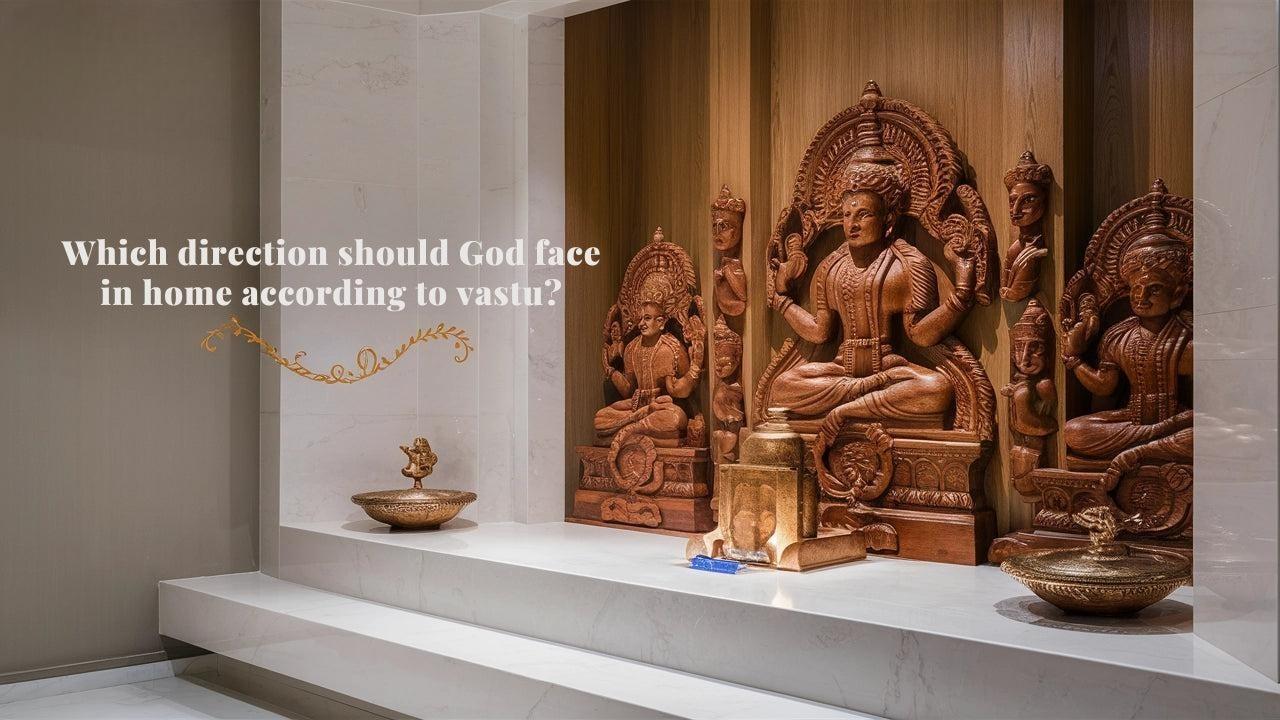Incorporating Vastu Shastra principles into your home's design enhances spiritual harmony and attracts positive energy. A critical aspect involves the placement and orientation of deities within your pooja room. Understanding the ideal directions for deity placement ensures a serene and prosperous living environment.
Significance of Deity Placement in Vastu Shastra
Vastu Shastra emphasizes aligning living spaces with natural forces to promote well-being. The orientation of deities plays a pivotal role in channeling divine energies effectively. Proper placement fosters spiritual growth, peace, and prosperity within the household.
Ideal Directions for Deity Placement
Northeast: The Most Auspicious Direction
The northeast corner, known as Ishan Kon, is considered the most sacred space for a pooja room. Positioning deities here invites divine blessings and enhances spiritual vibrations. This direction is associated with purity and is believed to be the abode of deities.
East: Embracing the Rising Sun
Placing deities to face the east aligns with the energy of the rising sun, symbolizing new beginnings and enlightenment. Devotees facing west while praying towards east-facing deities benefit from this positive energy flow.
West: A Practical Alternative
If the northeast or east directions are unavailable, the west serves as a suitable alternative. In this arrangement, deities face east, allowing devotees to face west during worship, maintaining a harmonious energy balance.
Directions to Avoid for Deity Placement
South and Southeast: Inauspicious Choices
Avoid placing deities in the south or southeast corners, as these directions are associated with fire and instability, contradicting the serene ambiance required for a pooja room. Such placements may disrupt the flow of positive energy within the home.
Specific Deity Orientations
-
Lord Ganesha: Position in the north or northeast to attract wisdom and prosperity.
-
Lord Shiva: Place in the north or northeast to enhance spiritual growth.
-
Goddess Durga: Situate facing east to invoke strength and protection.
-
Lord Vishnu: Position facing west to promote peace and harmony.
-
Lord Hanuman: Place facing south to ward off negative energies.
Practical Considerations for Pooja Room Setup
-
Elevation: Ensure deities are placed on a raised platform or pedestal, never directly on the floor, to maintain sanctity.
-
Cleanliness: Keep the pooja room immaculate and free from clutter to allow the free flow of positive energy.
-
Lighting: Illuminate the space with natural light or lamps to enhance spiritual ambiance.
-
Offerings: Regularly present fresh flowers, incense, and water to honor the deities and maintain a vibrant spiritual atmosphere.
Adapting Vastu Principles in Modern Living Spaces
Pooja Room Placement in Apartments
In compact living environments, dedicating an entire room for worship may be challenging. Consider the following adaptations:
-
Living Room Integration: Designate a quiet corner in the northeast section of the living room for the pooja space.
-
Wall-Mounted Mandir: Install a wall-mounted mandir in the northeast or east direction to conserve floor space while adhering to Vastu principles.
-
Portable Pooja Units: Utilize movable pooja units that can be positioned appropriately during worship and stored when not in use.
Enhancing the Pooja Room Atmosphere
Choosing the Right Colors
-
White and Yellow: Promote purity, peace, and enlightenment, making them ideal for pooja rooms.
-
Light Blue and Green: Encourage calmness and harmony, fostering a meditative environment.
-
Avoid Dark Shades: Dark colors absorb energy, diminishing the spiritual ambiance of the space.
Sound and Fragrance Elements
-
Chanting and Bells: The sound of bells and chanting creates high-vibrational energy, purifying the space and enhancing focus during prayers.
-
Essential Oils and Incense: Fragrances like sandalwood, jasmine, and camphor enhance spirituality and maintain a serene atmosphere.
Common Mistakes to Avoid
-
Multiple Idols of the Same Deity: Refrain from placing multiple idols of the same god or goddess, as it may lead to energy clashes.
-
Damaged Idols: Avoid installing broken or damaged idols, as they are considered inauspicious and may attract negative energy.
-
Storage of Non-Religious Items: Do not store unrelated items in the pooja room to maintain its sanctity and focus.
-
Placing the Pooja Room Near Bathrooms: Water sources from bathrooms generate negative energy, which may disrupt the positive energy of the mandir.
-
Using the Pooja Room for Other Purposes: The space should be dedicated solely to prayers and spiritual activities.
Conclusion
Aligning deity placement with Vastu Shastra principles transforms your home into a sanctuary of peace and positive energy. By thoughtfully positioning deities and maintaining the pooja room's sanctity, you invite harmony, prosperity, and spiritual well-being into your household.
For personalized guidance on implementing Vastu principles in your home, feel free to contact us.
Frequently Asked Questions (FAQs)
1. Which direction should God face in a home as per Vastu?
God should ideally face east or west. The northeast direction is the most auspicious for a pooja room.
2. Can I place a mandir in my bedroom?
It is not advisable to place a mandir in the bedroom. If necessary, ensure it is in the northeast and covered when not in use.
3. Is it okay to keep broken idols in the pooja room?
No, broken idols should be removed respectfully from the home as they are considered inauspicious.
4. Can I have multiple idols of the same deity?
It is best to avoid multiple idols of the same deity, as it may create energy imbalances.
5. What should be the height of the deity idols?
Idols should be placed at eye level or slightly above, ensuring they are not placed directly on the floor.
6. Can I store items in the pooja room?
The pooja room should be clutter-free, and non-religious items should not be stored there.
7. Is it okay to have the pooja room under a staircase?
No, placing a pooja room under a staircase is not advisable as it attracts negative energy.
8. Can I place a mandir in the kitchen?
A pooja room in the kitchen is not ideal, but if necessary, position it in the northeast corner of the kitchen.
9. How to dispose of old idols respectfully?
Wrap them in a clean cloth and immerse them in a river or bury them in a sacred place.
10. Can I keep a pooja room in a rented house?
Yes, a small designated space in the northeast corner can serve as a pooja area in a rented house.



